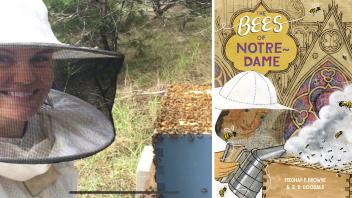Last week was National Pollinator Week which got us Bug Buddies thinking about those perfect pollinators — bees! We read some books about these insects and then toasted the hardworking bees with a super smoothie made from the fruits of their labor.
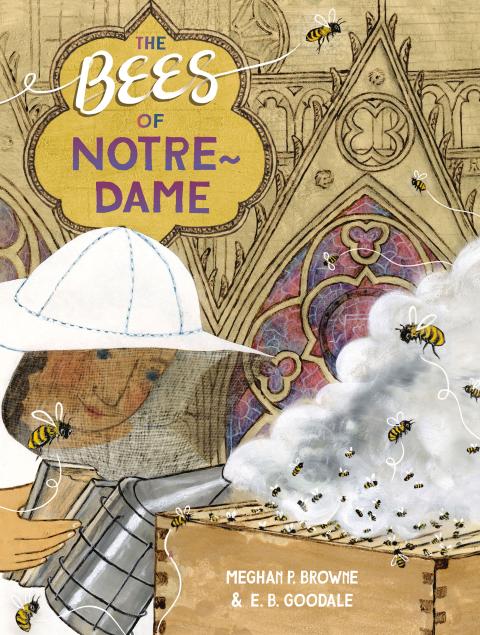
One fascinating title we picked up was The Bees of Notre-Dame by Meghan P. Browne and illustrated by E. B. Goodale. This is the true and incredible story of the honeybee colonies that lived on the roof of the Notre-Dame Cathedral in Paris and survived the devastating 2019 fire. I never knew bees were housed atop the famous cathedral and it was so interesting to have a glimpse into their days and find out what happened to them when Notre-Dame burned.
Meghan , who has been keeping bees since 2015, lives on and runs a farm in south Austin, Texas, with her husband, Greg, their three children, and a menagerie of goats, chickens, dogs, and a thriving honeybee apiary! In addition to writing powerful picture book biographies (Indelible Ann: The Larger-Than-Life Story of Governor Ann Richards and Dorothy the Brave), she teaches her own children about beekeeping and often hosts local school groups at the farm to show them the beauty of bees. We’re so excited to have her here to share her awesome ideas about getting to know insects.
Getting Busy with Bees, Bugs, and Books by Meghan P. Browne
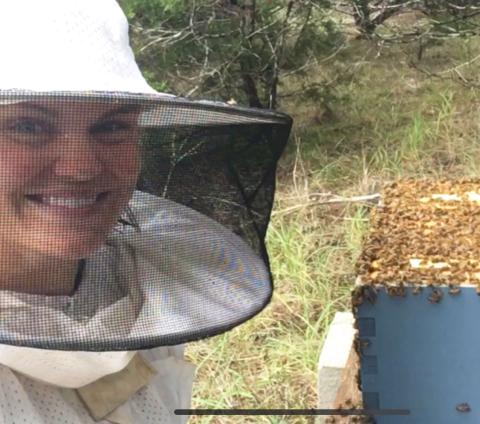
Happy summer, readers! Do you love this season as much as I do? Summer is one of my favorite times of year. My schedule seems to slow down a little bit, and I like to use the extra daylight to explore outside. Where I live in Texas, the summers can be so hot that I tend to wake up very early and go to bed very late to take advantage of the cooler temperatures before the sun rises and after the sun goes down. In my family, we like to take a siesta during the hottest part of the day. My rule is this: you don’t have to sleep, but you do have to rest, and reading is one great way to spend this downtime.
This season is a busy time for beekeepers, too! We harvest honey from our beehives and make sure the bees have everything they need to make it through a very hot time of year. I notice in the summer when I get up early and feed my doggies that the honeybees are up, too! Our giant blue flowering salvia bushes are always abuzz with worker bees gathering nectar and pollen. They must like taking advantage of the cool morning temperatures just like me.
Make an Insect Journal
Keep a journal throughout the day and make note of insects you hear and see.
- Can you identify the insect? If you live in the United States, you can check your county or a nearby county agricultural extension office website for guides to insects that live near you. You can also work with an adult to use a mobile app (such as Picture Insect ) and identify insects with a picture.
- Draw a picture and label the insect’s head, thorax, abdomen, antennae, wings, and other specialized body parts.
- Describe what the insect is doing. What role does the insect play in your environment?
- Is it alone or working with other insects like it?
By the end of the summer, you will have created your own insect field guide!
Create a Mimic Mask
Have you ever played copycat by pretending to be like a friend or a sibling? Did you know that many insects use that same kind of mimicry to protect themselves in the wild? Some insects have evolved to look like leaves, tree bark, or other parts of their surroundings in order to hide from predators. Other insects like certain flies and beetles have evolved to display markings similar to stinging insects like the stripes of certain bees and hornets.
Supplies:
- Cardboard box or paper grocery sack
- Scissors
- Markers, crayons, or colored pencils
- Construction Paper
- Glue
- Other craft materials you have around
- Twine
Directions:
Cut out and decorate a mimic mask with your crafting materials. Go wild! Will your mask help you blend into your surroundings, or will you mimic another animal with a special superpower? Use twine to make a head strap for your mask.
More about mimicry
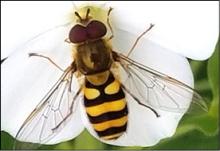
Many insects like this hoverfly use mimicry to protect themselves. Even though a hoverfly is not a stinging insect, its markings make it easy to confuse with a bee or hornet who would use a painful sting to protect itself. (photo source: Veronica Calles-Torrez of NDSU )
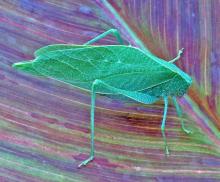
Katydids are responsible for beautiful summer night lullabies. They use mimicry/camouflage in trees with broad green leaves. (photo source: Wisconsin Horticulture Division of Extension )
Host a Moth Ball
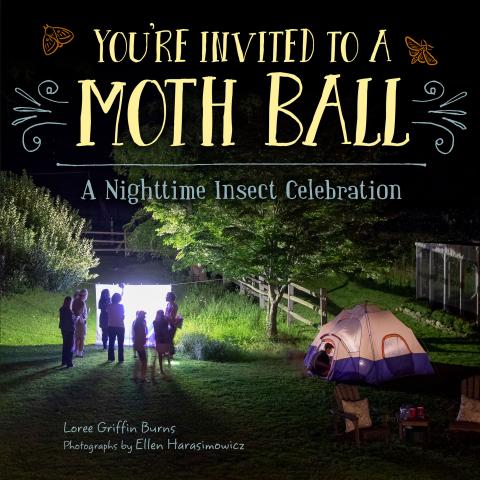
Buy or check out from your local library a copy of Loree Griffin Burns’s You’re Invited to a Moth Ball and learn how to host your very own nocturnal insect party in your yard or community center with friends and families in your neighborhood!
Read The Bees of Notre-Dame
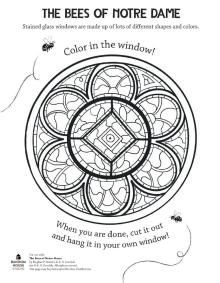
Use your imagination to travel with me to Paris and meet the bees that live at the ancient cathedral at Notre-Dame. We’ll explore the streets and gardens of Paris, France, and learn about the devastating fire that happened in 2019. As you read, look for the helpers who helped during the emergency.
Finish with these activity pages created by illustrator, E.B. Goodale.
Resources
- Meghan P. Browne website
- Start with a Book: Bug Buddies
- Start with a Book: DIY Science Camp: Bees
- Reading Adventure Pack: Bees
- Download, print, and cut out our 8-page mini-book How Bees Make Honey
